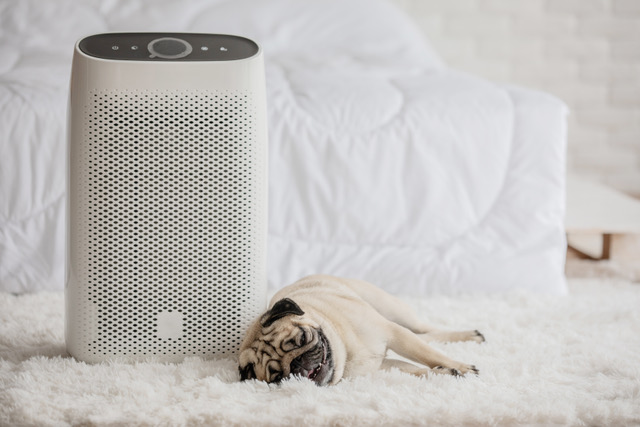Wellness Check – What’s Your Indoor Air Quality?
- Published: Tuesday, September 8th 2020
- in Wellness

Air is arguably one of the biggest wellness trends of 2020. That’s right, ordinary air: the invisible substance that surrounds us and creates the energy that sustains our lives. However, what if we are breathing air that contains harmful substances that could harm every organ in our bodies? Just like air itself, the dirty air that collects indoors in our homes and offices is usually invisible. But too often it’s a health risk and detrimental to our wellbeing.
The Air Around Us
Before we get into why we should care about air (we couldn’t resist the rhyme), let’s take a quick look at the science. Air consists of a mixture of gases, approximately 78 percent nitrogen, 21 percent oxygen and small amounts of gases like carbon dioxide, neon and hydrogen. Air also carries tiny particles like dust, chemicals and pollen, along with smoke and vehicle exhaust, which are major culprits in air pollution. Plus, air can also hold and transport water and liquids and, according to many scientists, COVID-19 respiratory droplets or microbes. As an article in The Atlantic describes it, “Although these microbes can’t fly, they can travel long distances through the air—via wind, rain, or even a sneeze!”
It’s Safer Outdoors
Scientists and medical professionals also tell us that good ventilation and air flow lower the risk of catching the coronavirus and other harmful diseases. The Atlantic notes that most super-spreader coronavirus events occur at a poorly ventilated indoor location where lots of people are gathered. (Think restaurants, bars and nursing homes.) Thankfully, there are ways to lower the risk of coming into contact with an airborne viral particles and pollutants: exchange air in the room with air from outside and remove pollutants from the air with filters. Even if you don’t have a lot of people in your home, there are good reasons to breath cleaner air, such as reducing allergens.
Air Filtration Systems Can Make a Difference
Your doctor, dentist or wellness center may have installed a HEPA air filtration system to keep patients safe during the pandemic. Health and wellness professionals choose air purifiers with HEPA filtration because they can capture particles smaller than the virus that causes COVID-19. And according to an article in the New York Times, there is evidence that COVID can be transmitted by air. However, the CDC stresses that the primary defense against this dangerous virus is still social distancing, wearing a mask, washing your hands frequently and cleaning frequently touched surfaces with disinfectants.
Breathe Easier with the Latest Air-purification Technology
Well + Good writes that indoor air quality can be two to five times worse than air outdoors, with the potential to harm all our organs. Plus, chemicals we bring into our home in carpets, paint and cleaning supplies can stay in the air and cause serious health issues. However, we can breathe easier with the latest air-purification technology. (If you are considering an air purifier, do your homework first.)
The New York Times Wirecutter product experts published their picks for the best air purifiers from budget brands to higher-end models. You can find other recommendations and more information at www.molekule.com and www.intellipure.com/shop.
Interested in learning about how proper breathwork can improve your health and wellness? Check out this article from Miraval.









